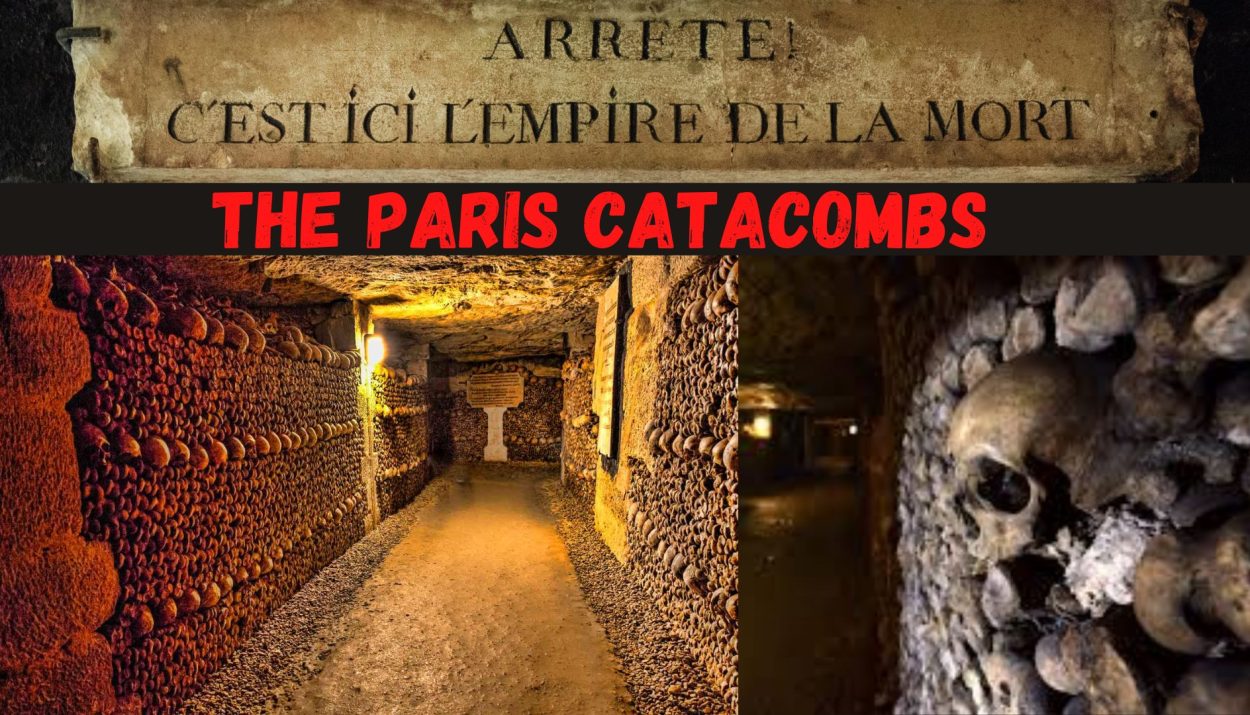Beneath the surface of the beautiful city of Paris, lies a mysterious centuries-old labyrinth of tunnels containing the bones of millions of bodies. It is written at the entrance – “Arrête! C’est ici L’empire de la Mort” meaning “STOP! This is the kingdom of death”. They are fascinating. It is a set of tunnels about a mile long and some parts are also open to visitors. It is the largest underground ossuary in the world.
The general definition of a Catacombs- Catacombs are a series of underground passages and rooms where bodies were buried in the past (according to the Cambridge dictionary).
The Catacombs of Paris refers to the entirety of the cast network of galleries extending beneath Paris. Catacombs are burial places above ground. Walking inside the catacombs, you will see bones scattered. They are everywhere. It is a repository of human bones. Thousands of skeletons line the walls, some with cloth hanging from them. By some estimates, the Paris catacombs contain the bones of over six million people.
Let’s explore the darkness beneath Paris, the city of light. In this article, we will find out how the catacombs developed and their dark secrets.
History of the Paris Catacombs
Paris faced problems in the 18th century. The issue was that cemeteries were overcrowded and space was needed to house the millions of corpses. The Paris authorities then chose a site called the Tombe-Issoire quarries under the plain of Montrouge. These quarries were no longer in use and were dug by the Romans in the 15th century but were later abandoned. These underground tunnels extend over 3 square miles beneath the city.
Many people were dying due to the French war, disease and famine. The cemetery was littered with dead bodies. A terrible smell of rotting corpses was coming from the cemeteries.
King Louis XVI commissioned an architect named Charles Axel Guillaumot for the work. They dug tunnels and began moving bones from the Saints-Innocents cemetery in 1785 because the cemetery was full and there was no room for any more dead people. It was the oldest and largest cemetery in Paris. The bones were taken to quarries which effectively became catacombs.
The site was formally called the “Paris Municipal Ossuary” and was informally called the catacombs.
Present day
The Catacombs in Paris officially opened to the public in 1809. It attracted a lot of visitors. About 550,000 people go there annually.
Initially, the bones of the dead were first stored very simply. But later funeral workers began arranging the bones in decorative structures like circles or barrels. Even the walls and pillars are lined with skulls, femurs, tibias etc.
One of the famous formations is the “barrel”. It is a barrel-shaped pillar assembled with thousands of bones that have been erected to support the ceiling of a room called the “Crypt of the Passion”.
Is it okay to move bones from the cemetery to these dark tunnels under the city? There is a local legend that says that moving the bones of so many dead people released a dark and malevolent force that still haunts the catacombs.
Some parts of the catacombs are closed to the public. It is said that such closed tunnels could be home to anything.
